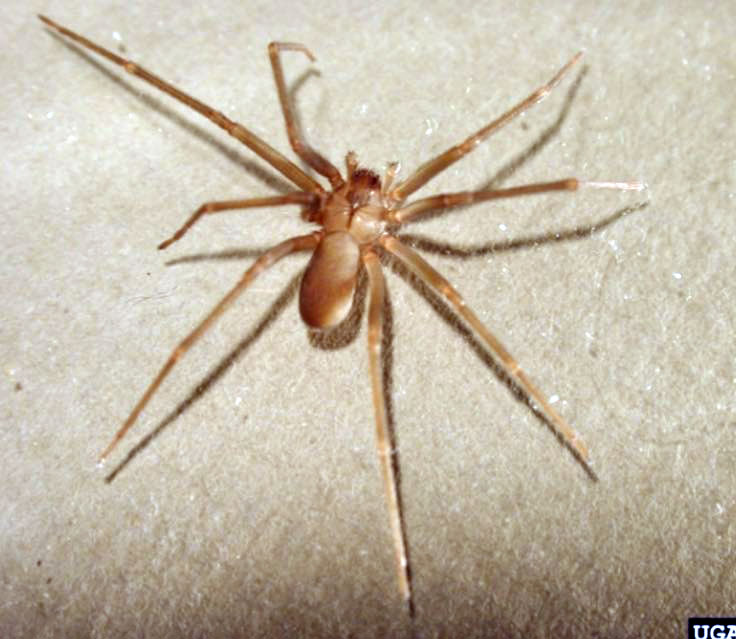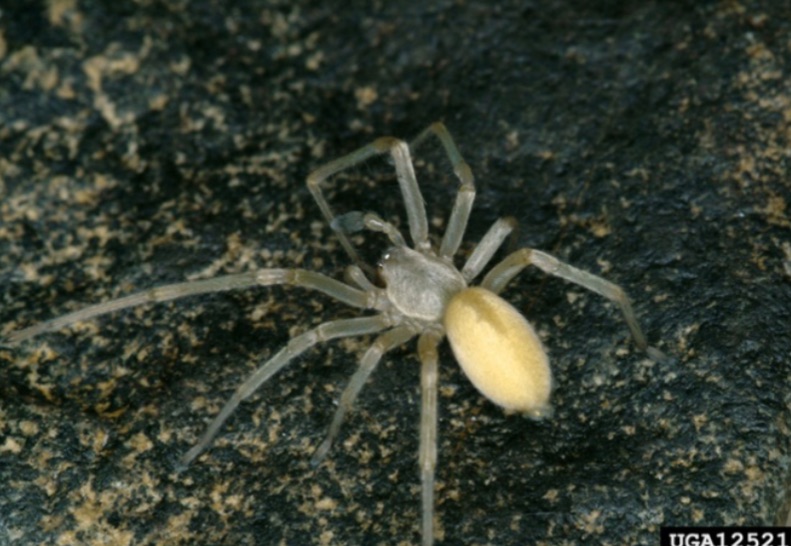Your Winter Spider Visitors May Not Be Perfect Guests
By Elizabeth Cornell Fake, Fairfax Master Gardener

Female Black Widow
As the days shorten and temperatures chill, pesky critters hitchhike their way into our homes to shelter over the winter. Among the different guest pest species, spiders can be especially troublesome. Most spiders that make their way into Virginia homes are harmless, and many wounds thought to be spider bites may be caused by some other kind of insect. But there are some spiders in Virginia that are troublesome and if they bite, their venom is toxic, resulting in a wound that requires immediate medical attention. Spiders to watch out for include the black widow, the brown recluse spider and yellow sac spider.

Immature Black Widow
Black widow spiders
(Latrodectus variolus Walckenaer) are commonly found in Virginia and are the only native venomous spider. They have shiny black bodies with red markings on their bellies. The adult female is about 0.5 inch in length and is the primary culprit. She will produce about 900 eggs at a time which is necessary as baby spiders eat each other for survival. In summer, black widows prefer quiet places outdoors such as in brush piles, tree hollows and sheds. In the winter they enter homes and other occupied buildings residing in basements, garages or attics to overwinter or hibernate. They usually stay within the confines of their web where they wait for prey. They are not aggressive but will bite if disturbed. The venom will cause immediate, intense pain, swelling and redness. Sweating, nausea and abdominal cramps may follow and last several days. Although death from a black widow bite is rare, it is best to seek medical help for a black widow bite as soon as possible especially if the victim is a small child or elderly person. Pets, cats in particular, are also at risk for black widow spider bites.

Brown Recluse
The brown recluse spider
(Loxosceles reclusa) can often be an unwelcome guest. Identified by the characteristic fiddle-shape marking on their head region, they range in color from tan to dark brown. The body measures about 0.4 inch. They are not native but have migrated to Virginia and been have found residing in Fairfax since 2011. They recluse themselves in basements and garages among dusty paper boxes and hide without making webs in the open. Their bite can be severe in some cases with a systemic reaction within 24-36 hours. The bites may cause tissue death at the bite site with a necrotic wound that may last several months. Bite symptoms include fever, chills, nausea, weakness and joint pain which indicate it is time to see a doctor.

Yellow Sac Spider
Yellow sac spiders
(Cheiracanthium inclusum) are also found in Virginia and have a bad reputation for venomous bites. They are yellow with brown midline markings on the legs and mouth parts and can range from 0.2 to 0.4 in length. Outdoors, they can be found near the silken tube or sac they spin for their daytime home beneath tree bark and under stones or logs. In winter, they find their way inside buildings, and their sacs can be found in open spaces such as corners, along baseboards and ceilings and behind furniture. They are nocturnal, seeking insects and other spiders for food. Yellow sac spiders inflict the most common spider bite, and they can bite a person one or more times. Their bites are mild without a toxic venom, though they have an unearned reputation for causing large infected sores. With normal first aid, the bite will heal within a few weeks. But secondary infection can occur which needs prompt medical attention.
The best way to prevent spider bites is to limit their access to your home. Winterize with tight seals around doors, windows, foundation cracks and crevices to prevent points of entry. Clear out clutter and old paper boxes from basements, garages and storage areas to limit places for their habitat. In the event they do breach your defenses, root them out with a dust mop or vacuum cleaner, sticky traps, fly swatters and aerosol insecticide sprays.
References
• Spiders of Medical Concern in Virginia, Theresa A Dellinger and Eric Day, Virginia Cooperative
Extension, Virginia Tech, Virginia State University
• Spiders of Medical Importance, Changlu Wang, Cooperative Extension Fact Sheet FS1121, Rutgers New
Jersey Agricultural Experiment Station



